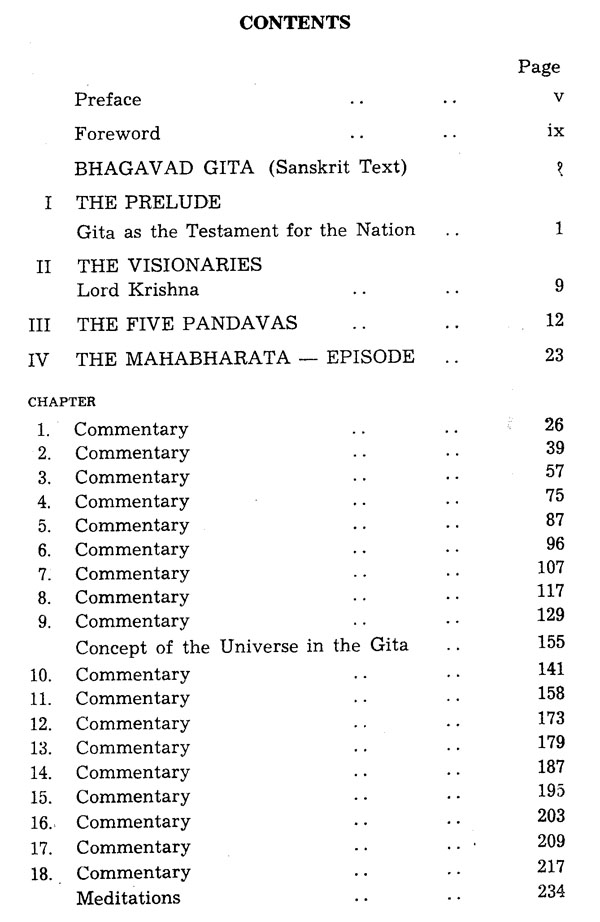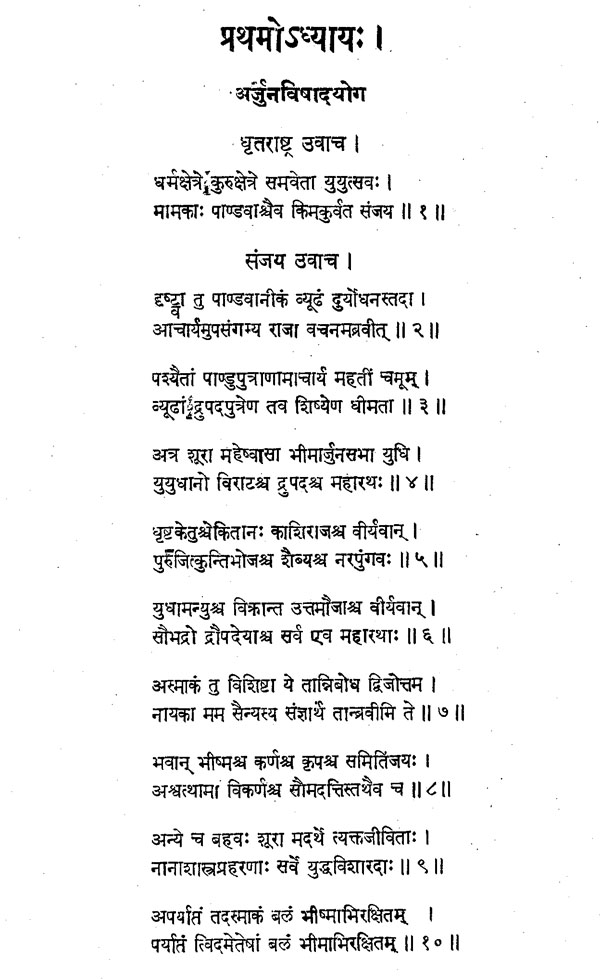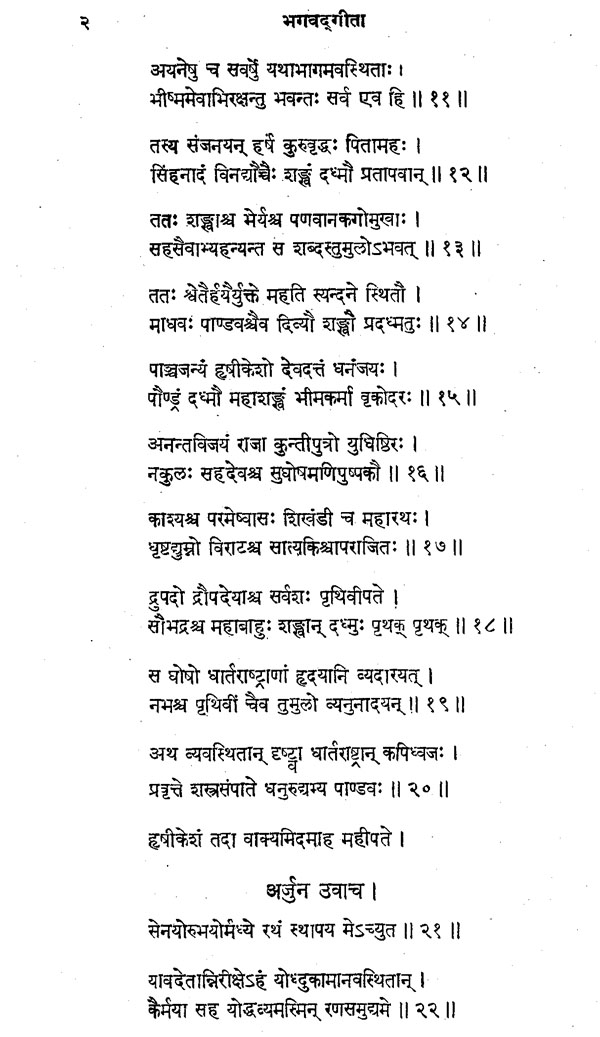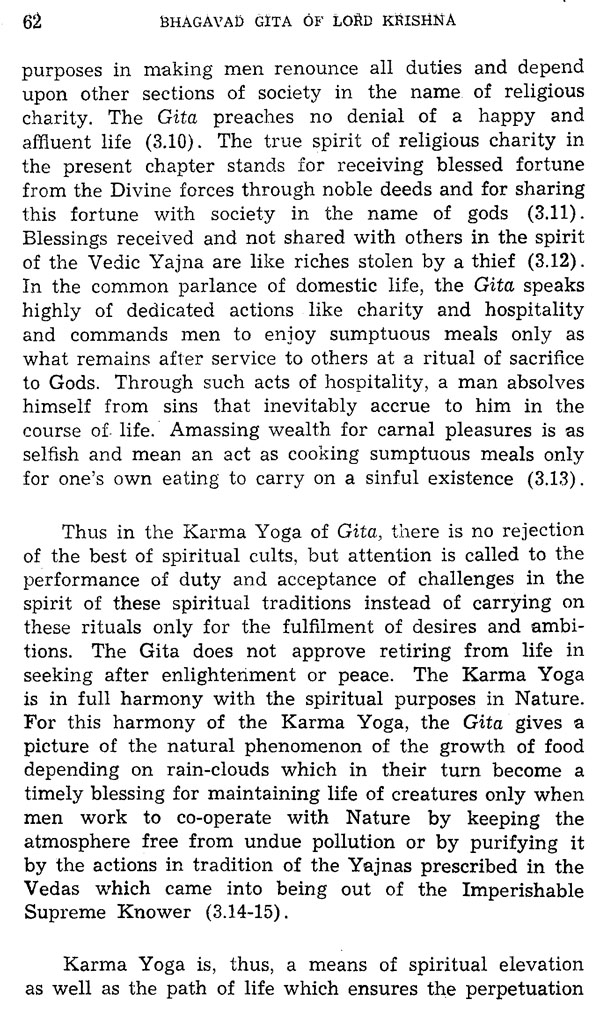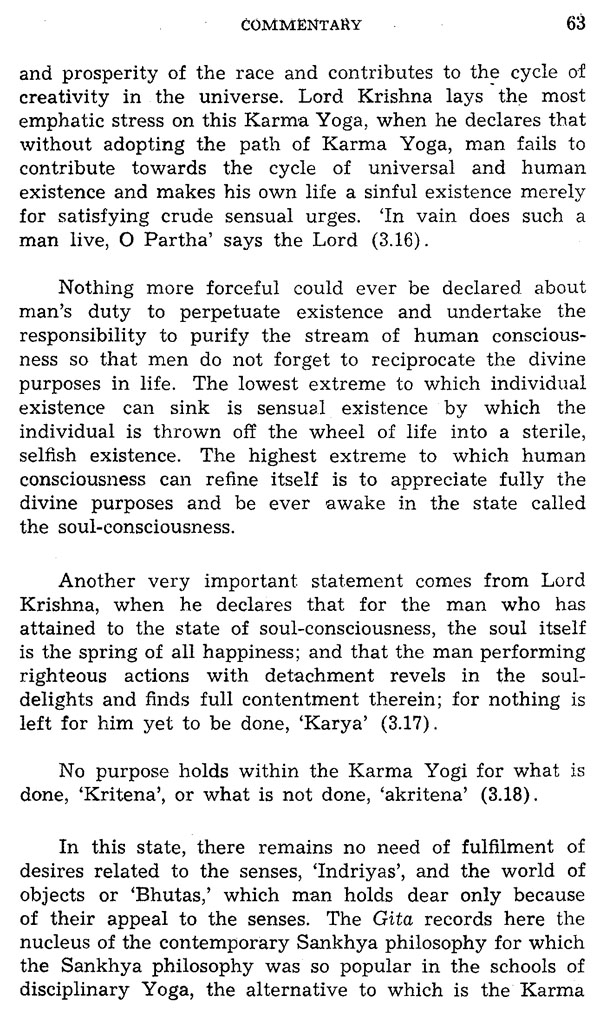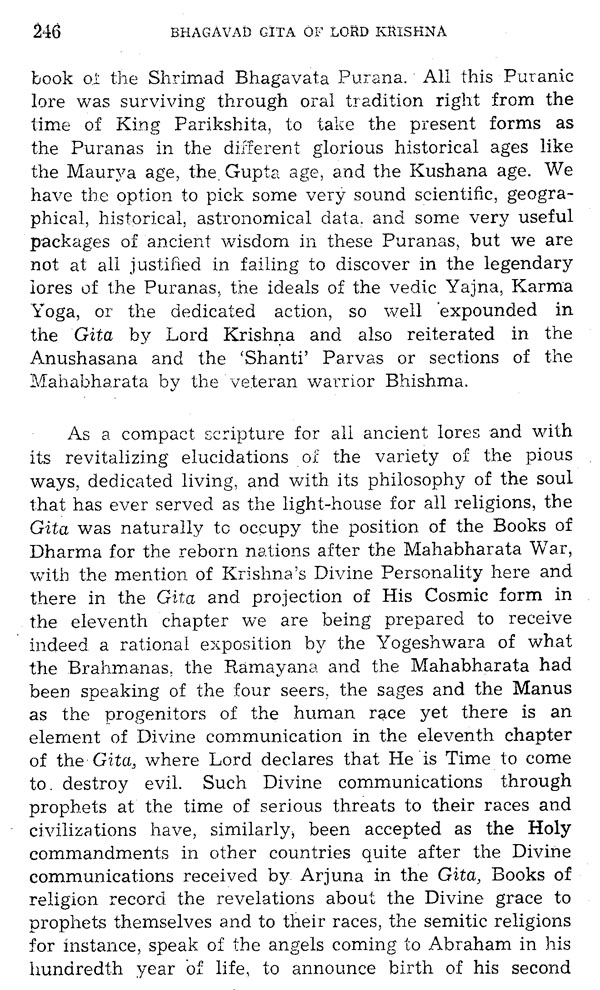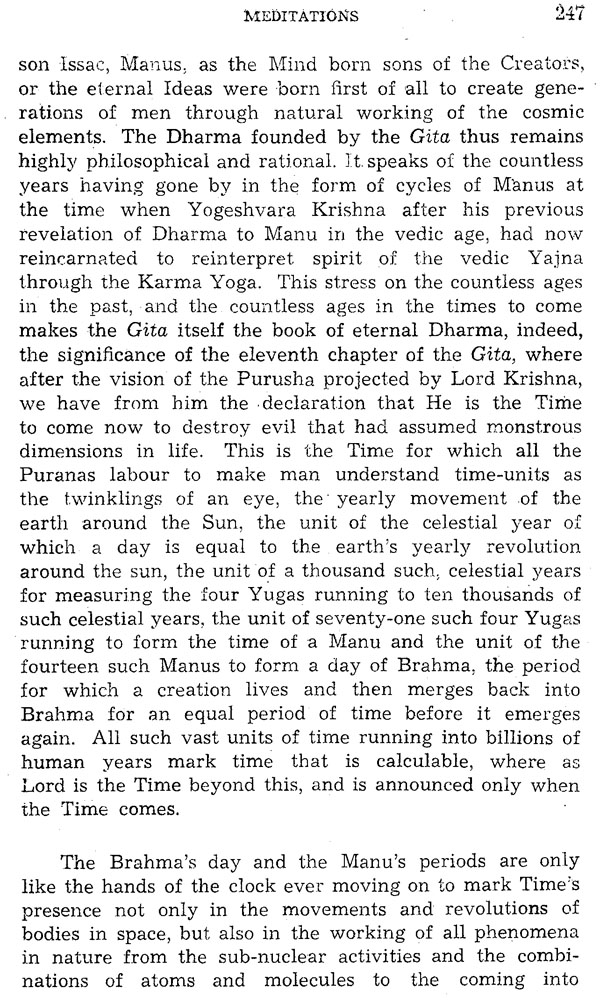
Bhagavad Gita of Lord Krishna (An Old and Rare Book)
Book Specification
| Item Code: | NAX460 |
| Author: | J.K. Trikha |
| Publisher: | BHARATIYA VIDYA BHAVAN, MUMBAI |
| Language: | English |
| Edition: | 1986 |
| Pages: | 249 |
| Cover: | PAPERBACK |
| Other Details | 8.50 X 5.50 inch |
| Weight | 310 gm |
Book Description
Dr. Trikha contributed articles on the various lores of India. His first book Guru Nanak as the National Saint of India was well received. His other books are Rig Veda, A Scientific and Intellectual Analysis of the Hymns of Somaiya Publications and A Study of the Ramayana of Valmiki, a Bhavan's Publication.
In the present book Bhagavad Gita of Lord Krishna, the author attempts to trace the development of thought in the Gita by chapter by chapter commentary and translation.
In identifying Himself with Rishis like Bhrigu, Narada and Vashishta, the Lord projects the remotest ages as having been a real scene of the dynamic activities of those Vedic seers whom even in Krishna's own days the people had begun to look upon as mythical. In declaring Shankara among Rudras, and Mirichi among Maruts as His own self, Krishna accepts the authenticity of the Vedic Revelations in unequivocal words. Mentioning the Sankhya, the Yajna cults of the Mimamsa, the beautiful wordings of the Brahma Sutras, His own Karmayoga as the revived version of the Vedic Karmayoga and by arguments like "That which is born must die" 'That which exists not, shall never be existent', the Lord records the Nyaya or the logic of thought preserved since the earliest ages, along with the Schools of philosophies of the times.
Recounting units of Time as the bright and the dark fortnights, the earthly year and the year of the Devas and Asuras; the age of Manu, and the Day and Night of Brahma, and finally Himself as the Supreme unit of time, `Kala' which annihilates all world-systems from the world of the Creator or down to the world of the living beings; the Lord sanctifies the achievements in the scientific thought which had been popular through the educative curriculum of those early ages.
Sir Edwin Arnold, in his memorable rendering of the Bhagavad Gita in English verse, called it The Song Celestial. It can equally be called The Song Eternal. For generations, the Gita has been read, re-read and commented upon. Each time a sensitive mind reads it, some new facet is lighted up. Sri Aurobindo, Lokmanya Tilak and Sarvepalli Radhakrishnan have, through their invaluable commentaries, helped India ---to refresh their perceptions of the Gita.
Book's Contents and Sample Pages
